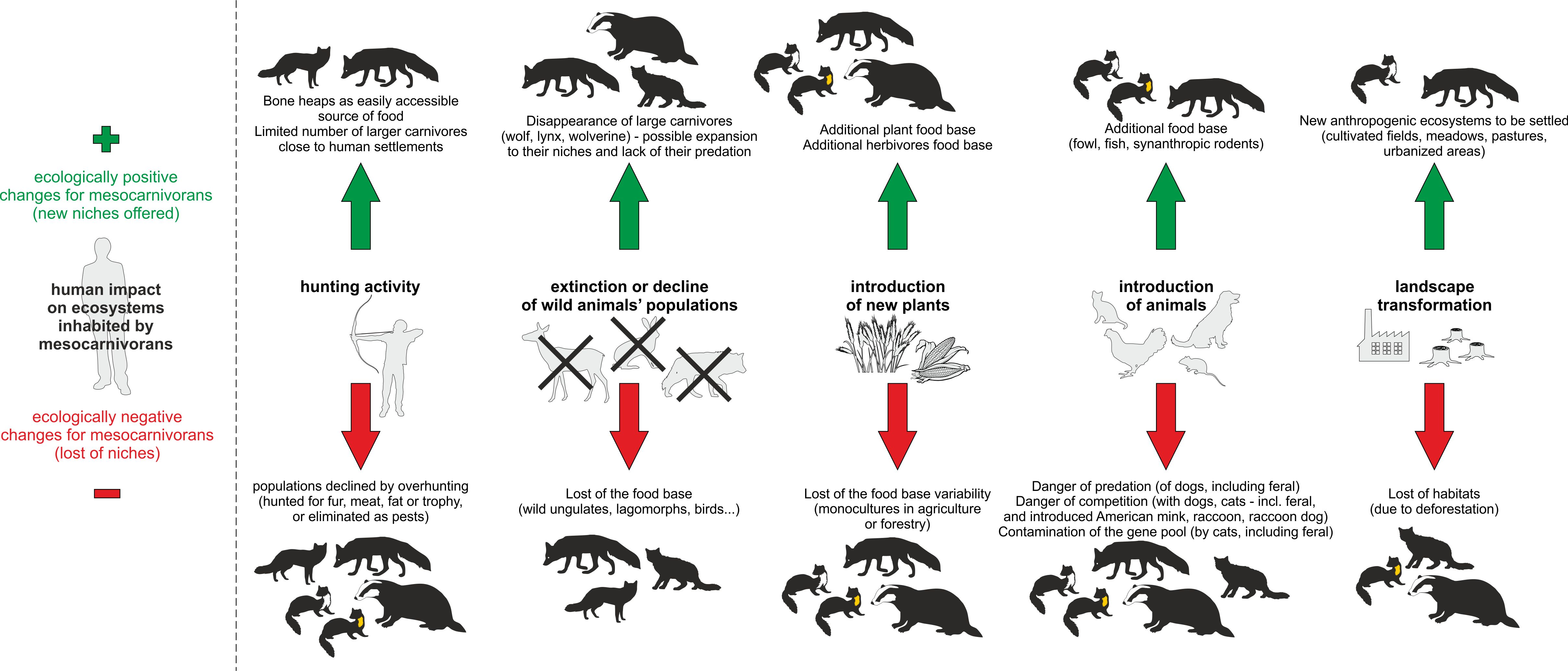During the hunting-gathering phase of prehistory, human caused a relatively limited impact on biophysical processes and ecological systems, and the animal habitats were primarily controlled by climatic factors. The increase of human population, development of densely populated centers and introduction of new subsistence modes (especially agriculture and pastoralism), had strongly influenced the ecological balance. Human impact on environment during the several last millennia caused visible changes in the native fauna, including limitation of ecological niches for some species or extirpation of the others.
The main objective of this project is to reconstruct the history of adaptation of the mid-sized mammalian carnivores of the genus Vulpes, Martes, Meles and Felis in response to the environmental changes during Postglacial period, both as a consequence of changing climatic phases and a result of human impact on environment.

The use of stable isotope analysis as the main research method means that adaptations will be reconstructed primarily in terms of nutrition. The adopted methodology includes the possibility of reconstructing such elements of the diet as: the spectrum of preys; the contribution of meat food in diet; trophic level; width of the ecological niche. The project assumes a comparative study of several species with similar ecological characteristics, with the same chronology and geographic range. This will allow to identify the competition within the mesocarnivoran guild, the sharing or taking over the niches, and the manner and extent of the exploitation of anthropogenic resources and artificial environments. An important aim of the project is to establish the detailed chronology of ecological adaptations and to trace these changes over a long time interval: since the strong climatic turnovers during Final Pleistocene, associated with relatively weak anthropopressure; through the period of climatic stabilization during Middle Holocene, followed by the beginning of the Neolithization; till the strong development of agriculture and urbanization during Middle Ages and modern period; up to the present day widespread artificial environments.

